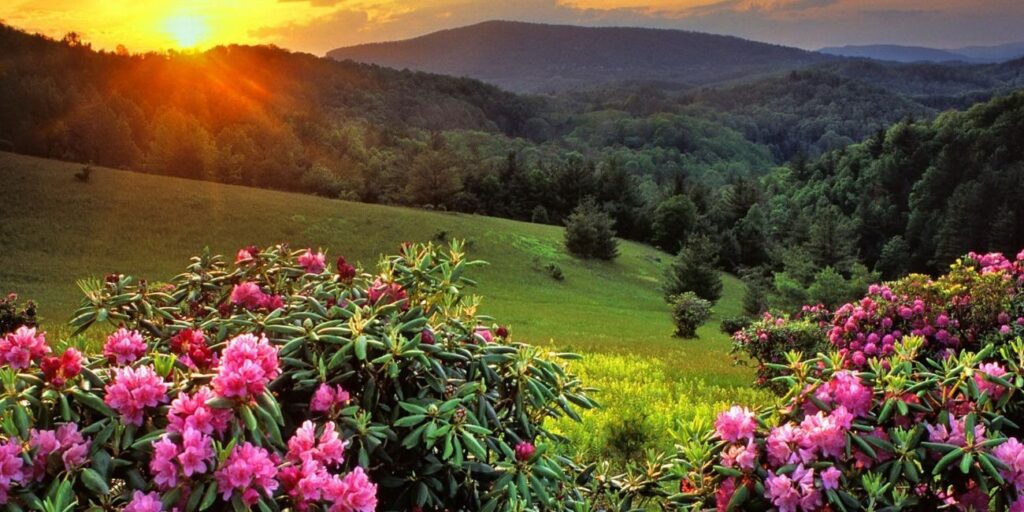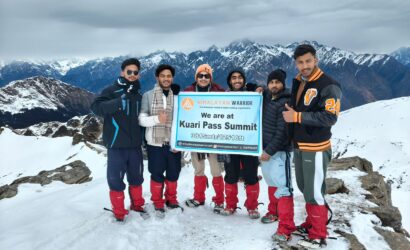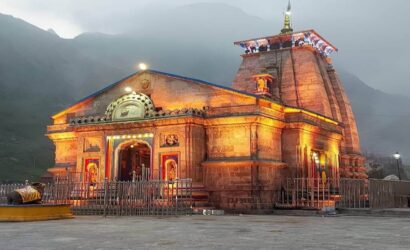Nag Tibba Trek is an high altitude trek. The trekking gear you have to have for this particular trek differs from normal treks. Thus read this whole segment.
Trek Essentials: You can’t do the trek without these.
1. Trekking Shoes
Phulara Ridge needs sturdy trekking shoes that can withstand snow and have good grip.
Rental: We have the decathlons proper Quechua trekking shoes for rent Rent trekking shoes Here.
2. Backpack
A backpack 50-60 litres is required for a trek such as Phulara Ridge. Your backpack should have good hip support, shoulder support, and pockets should be accessiable quickly .
3. Clothing
Layering is the best way to protect yourself in the mountains. Layers provide maximum protection against all the elements. Layers are also great for protecting against the elements, especially when it changes rapidly in the mountains.
Base Layer: 3 – T-shirts
Carry 2 T-shirt, and wear 1. Wear full-sleeve, dry-fit T-shirts, preferably with collars. These will protect your neck and arms from sunburn. UV radiations can quickly burn you, especially in the high altitudes of the trek.
Dry-fit T-shirts dry quickly, dry quickly, and are quick drying in the event of rain. Collared T-shirts work better than those with rounded necks.
Cotton or Synthetic?We Indians love cotton. It makes sense to wear cotton down in the plains, where the heat can reach 40 degrees Celsius. It takes a while to dry once it is wet. Synthetic is the best choice for mountains where temperatures are cooler. They are quick to wick sweat and dry quickly. They can smell fast so make sure to have a roll-on deodorant.
Expert Tip: If you’re more prone to colds, you can carry a pair of thermal inners. From the past experiences of ours, using 2 T shirts over other helps to prevent from cold.
From Where To Buy:Buy from Decathlon.
5. Insulation Layers in Winter.
The Phulara Ridge Trek can be done in winter. You will need at minimum 5 layers of warm clothing if you are going between December and March.
You will require1 – inner thermals, 2 – light fleece, 1 – light sweater, and 1 padded jacket. Don’t buy your grandma’s sweaters. They can be very heavy. You want fleece jackets and sweaters that fold easily.
A padded jacket is the best choice for your outer layer. Water resistant materials are not necessary. You do need an outer jacket with a padded lining that keeps out the cold and wind. Make sure your padded jacket includes a hood.
6. Two – Trek Pants
This trek requires at least one pair of trekking pants and a maximum of two. One pair of pants should be worn and one additional for when it rains/snows. Trek pants with zip-off thighs at the thighs make them ideal for trekking. You should also choose quick-drying pants over cotton. Even in colder climates, they dry quickly.
TRack pants or trekking pants?Track pants can be used as a backup or double as thermal bottoms. Track pants aren’t trek pants so they shouldn’t be your main outerwear. They should be used as an emergency backup.
Compulsory Accessories, without these you will not be equipped to perform the trek or not able to do Trek
These accessories are necessary to carry. These accessories are mandatory for anyone who travels to Phulara Ridge. Trekkers tend to delay borrowing or purchasing accessories. We recommend the opposite. These accessories should be gathered first.
1. Sunglasses.
Sunglasses are required to prevent snowblindness. Expect to be walking on snowy stretches during a winter trek such as Phulara Ridge. Snow blindness can be caused by a small amount of direct sunlight (around a half-hour’s exposure). Because fallen snow acts like thousands upon thousands of mirrors, reflecting direct UV rays. You will need sunglasses that provide UV protection.
If the trekking day is sunny and bright (on meadows, open sections), you should wear sunglasses. You must not remove your sunglasses from a snowy section until it is fully crossed.
In case you use spectacles: You can buy oversized sunglasses for your glasses, which you can wear over your regular glasses (buy at Decathlon). Photochromic lenses are also available if you find this cumbersome.
Contact lens users: Contact lenses can be worn on the trek if you have them. The lens solution won’t freeze. It will not be a problem to change your lens inside your tent. You will only need enough cleaning solution to clean your fingers. Your contact lenses can be covered with sunglasses.
2. Suncap.
Suncaps are mandatory. A sun cap is mandatory for trekking. It can cause headaches, sunstrokes, rapid dehydration, and a drop in performance.
Important Information: The Golden rule of the mountains is to always cover your head. A sun cap is a protective layer that protects you from the sun’s harsh rays during the day. It also works well with naked UV rays. Sun caps keep your body’s temperature in check. The reverse is true in the morning/evening. Your head quickly loses body heat. The woolen cap stops heat from escaping your head.
3.Hand Gloves.
You will be handling snow quite a lot on a trek like Phulara Ridge. To grip things or hold onto snow, gloves are essential. The gloves should also keep you warm. You should get synthetic gloves with waterproofing on the exterior and a padded interior. Wear a tight-fitting fleece glove in your synthetic hand glove if you have difficulty obtaining the combination (not likely). This trek requires hand gloves.
Rent Hand Gloves right here….
4. Woollen Cap or Balaclava.
These should cover your head. You lose the most heat in the cold mountains from your head and not your hands, feet, or other parts of your body. Protecting your head is important, especially in the evenings when the sun sets. Your woollen cap should be worn at all times, including early mornings and late evenings.
A woollen cap that covers your ears can protect your sensitive ears. Balaclavas are a modernized version of the woolen cap. The balaclava covers your ears, neck, and other parts of your face. A woolen cap that covers only your head will not be sufficient, such as a woolen cap, will require a neck warmer or scarf.
Buy Wollen Cap right here….
5. Socks (3 sets).
You should also have three to four pairs each of socks for sports. You get warmth and cushioning from sports socks. The mantra here is to wear synthetic socks, or at the very least a synthetic blend. Cotton socks absorb sweat and water. These socks are difficult to dry.
Woollen socks are warm and cozy in the winter. Two sports socks are sufficient if you can’t get woolen socks.
Buy Wollen Socks here
6. Head Torch / Head Lamp
Many trekkers don’t know if they should get a torch or a headlamp. A headlamp is essential because it allows you to use your hands for other activities. You’ll need to use your hands for the Phulara Ridge Trek, including washing dishes, setting up tents, and holding your trekking poles.
7. Trekking Pole / Trekking Stick
You can balance and stability with trekking poles. You can reduce your energy use by up to 40%. There are steep ascents, and descents on the Phulara Ridge Trek. A pair of trekking sticks can make the difference between a pleasant and strenuous trek. India uses a single trekking stick. Two trekking poles will give you more stability and balance. You can also walk faster with them.
8. Rainwear.
Weather can quickly change on a trek. In a matter of seconds, a bright sunny day can quickly turn into a torrential downpour. To combat this, you will need a poncho and a rain jacket. A poncho, a large rain cover that covers your arms and heads, is what you need. Because it covers you and part of your backpack, it is very effective. It is very light and weighs almost nothing.
9. Rain cover for your Backpack .
Backpacks can save your life. Your backpack will hold all of your dry clothes and warm gear. Your backpack should be kept dry at all times. Most backpacks have rain-covers built in. If your backpack does not come with a rain-cover, you can either buy one or make a large sheet of plastic to fit the dimensions of your backpack. The plastic sheet can be wrapped around the backpack and held in place by a string or elastic.
10. Daypack (20-30 ltrs, optional).
Some trekkers choose to load their bags onto a mule or potores while on the Phulara Ridge Trek. Although we don’t encourage it, if you do choose to offload, then a daypack is required. You will need to carry water bottles, rainwear and emergency medicines. The campsites are the only place you can find your main backpack, which contains most of your equipment.
One day backpack is a small version of backpack which is generally of 20 – 30 ltr capability.



















 About
About Contact
Contact
